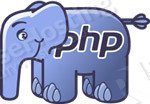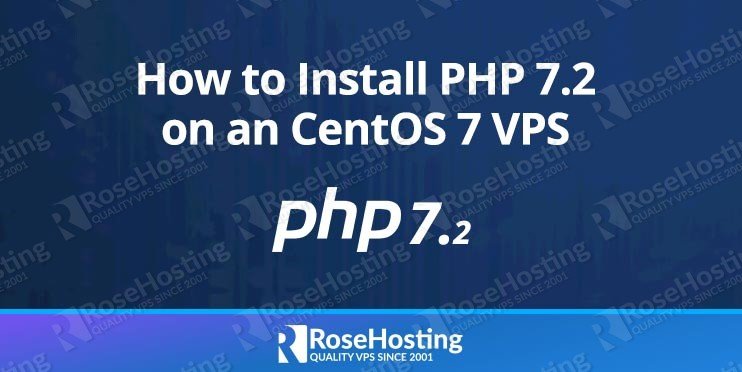
PHP 7 offers much better performances than PHP 5.6 and older PHP versions. Compared with PHP 5.6, PHP 7.2 could execute as much as three times more requests. If you have installed WordPress on your Linux VPS, this means much lower server load, thus you should expect your website to run faster with PHP 7.2.
In addition, PHP 7.2 offers some security improvements. There are some deprecations though that you may want to check before you consider upgrading to PHP 7.2.
Table of Contents
1. Prerequisites

yum update
The software update will take few seconds or minutes depending on what packages need to be updated. Once it is completed you can proceed with enabling the required repositories. PHP 7.2 is not provided in the default CentOS 7 repositories, so you need to enable the following:
Enable EPEL:
yum install https://dl.fedoraproject.org/pub/epel/epel-release-latest-7.noarch.rpm
Install yum-utils if it is not already installed.
yum install yum-utils
Enable the Remo repository for PHP 7.2:
yum install http://rpms.remirepo.net/enterprise/remi-release-7.rpm yum-config-manager --enable remi-php72
Once you are done with these steps, you can go ahead and install PHP 7.2
2. Install PHP 7.2 on CentOS 7
To install PHP 7.2 on your CentOS 7 VPS, run the following command:
yum install php72 php72-php-fpm php72-php-mysqlnd php72-php-opcache php72-php-xml php72-php-xmlrpc php72-php-gd php72-php-mbstring php72-php-json
This will install PHP 7.2 as well as other commonly used PHP extensions. To verify PHP 7.2 is successfully installed, run the following command:
php72 -v
The output should be similar to the one below:
# php72 -v
PHP 7.2.10 (cli) (built: Sep 11 2018 10:09:51) ( NTS )
Copyright (c) 1997-2018 The PHP Group
Zend Engine v3.2.0, Copyright (c) 1998-2018 Zend Technologies
with Zend OPcache v7.2.10, Copyright (c) 1999-2018, by Zend Technologies
Create a symbolic link to /usr/bin/php
ln -s /usr/bin/php72 /usr/bin/php
Verify again
php -v
The output should be similar to this:
# php -v
PHP 7.2.10 (cli) (built: Sep 11 2018 10:09:51) ( NTS )
Copyright (c) 1997-2018 The PHP Group
Zend Engine v3.2.0, Copyright (c) 1998-2018 Zend Technologies
with Zend OPcache v7.2.10, Copyright (c) 1999-2018, by Zend Technologies
Once you have PHP 7.2 installed on your CentOS 7 VPS you may want to customize some of the settings. Follow the steps below to do so.
3. Customize the PHP 7.2 settings on CentOS 7
You can customize PHP 7.2 by editing the php.ini file. To find the path to this file, you can use the command below:
php --ini | grep "Loaded Configuration File"
The command will return the path to the php.ini file which is currently used.
# php --ini | grep "Loaded Configuration File" Loaded Configuration File: /etc/opt/remi/php72/php.ini
You can use any editor of your choice to edit the file. We will use nano in our example.
nano /etc/opt/remi/php72/php.ini
4. Verify if the PHP files are being executed on the serve
Once you change the settings you want to change, save and close the php.ini file. If you are using Apache as a web server, you need to restart the Apache service for the new configuration to be loaded and for the changes to take effect. If you are using Nginx and PHP-FPM instead of Apache, you should restart the PHP-FPM service.
To check if the PHP files are being executed on the server you can create a sample info.php file and access it via web browser.
nano /var/www/html/info.php
Paste the following content:
<?php phpinfo(); ?>
Save and close the file, then open your favorite web browser and access the file by using your server IP address in the URL followed by the name of the file.
http://IP-ADDRESS/info.php

PS. If you liked this post on how to install PHP 7.2 on CentOS 7, please share it with your friends on the social networks using the buttons on the left or simply leave a reply below. Thanks.

When I type ln -s /usr/bin/php72 /usr/bin/php” I get
ln: creating symbolic link `/usr/bin/php’: File exists
If the symbolic link exists, you can skip this step. Are you getting an output if you run
php -v?sudo rm /usr/bin/php